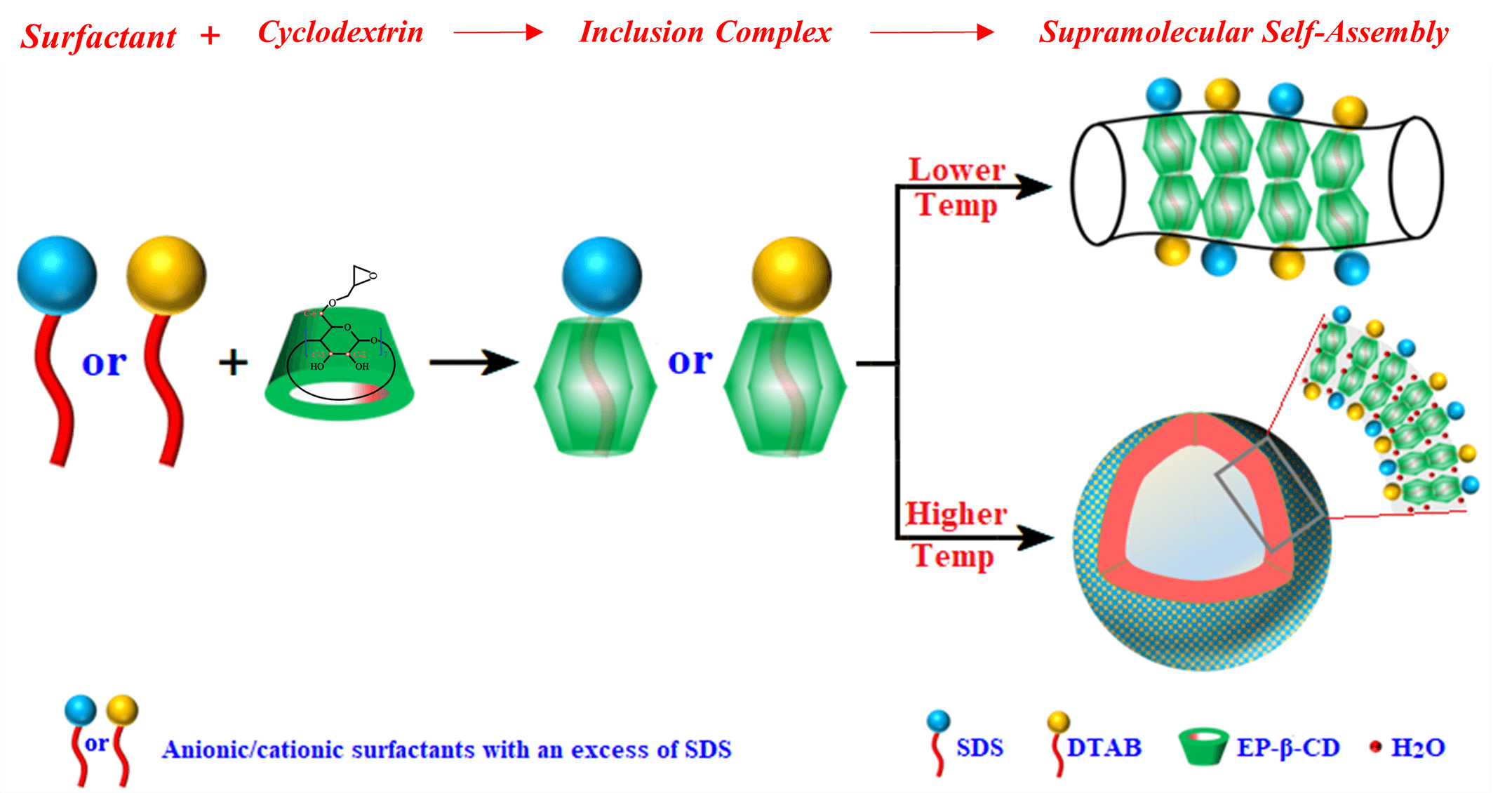 Open Access
Open Access
ARTICLE
Morphological Evolution of Self-Assembled Sodium Dodecyl Sulfate/Dodecyltrimethylammonium Bromide@Epoxy-β-Cyclodextrin Supramolecular Aggregates Induced by Temperature
1 Key Laboratory of Textile Science & Technology, Ministry of Education, College of Textiles, Donghua University, Shanghai, 201620, China
2 Collaborative Innovation Center of Fragrance Flavor and Cosmetics, School of Perfume and Aroma Technology (Shanghai Research Institute of Fragrance & Flavour Industry), Shanghai Institute of Technology, Shanghai, China
* Corresponding Authors: Qinfei Ke. Email: ; Xingran Kou. Email:
Journal of Renewable Materials 2024, 12(4), 629-641. https://doi.org/10.32604/jrm.2023.029182
Received 03 February 2023; Accepted 24 March 2023; Issue published 12 June 2024
Abstract
Bio-based cyclodextrins (CDs) are a common research object in supramolecular chemistry. The special cavity structure of CDs can form supramolecular self-assemblies such as vesicles and microcrystals through weak interaction with guest molecules. The different forms of supramolecular self-assemblies can be transformed into each other under certain conditions. The regulation of supramolecular self-assembly is not only helpful to understand the self-assembly principle, but also beneficial to its application. In the present study, the self-assembly behavior of epoxy-β-cyclodextrin (EP-β-CD) and mixed anionic and cationic surfactant system (sodium dodecyl sulfate/dodecyltrimethylammonium bromide, SDS/DTAB) in aqueous solution was studied. Morphological and particle size characterization found that the SDS/DTAB@EP-β-CD complex, as the basic building unit, self-assembled into worm-like micelles at lower temperatures and vesicles at higher temperatures. Nuclear magnetic resonance (NMR) and Fourier transform infrared spectroscopy (FT-IR) analysis revealed that the driving force for the formation of vesicles and worm-like micelles was the hydrogen bonds between EP-β-CD molecules, while water molecules played an important role in promoting vesicle formation between SDS/DTAB@EP-β-CD units. Herein, the mechanism of the morphologic transformation of SDS/DTAB@EP-β-CD supramolecular aggregates induced by temperature was elucidated by exploring the self-assembly process, which may provide an excellent basis for the development of delivery carriers.Graphic Abstract

Keywords
Cite This Article
 Copyright © 2024 The Author(s). Published by Tech Science Press.
Copyright © 2024 The Author(s). Published by Tech Science Press.This work is licensed under a Creative Commons Attribution 4.0 International License , which permits unrestricted use, distribution, and reproduction in any medium, provided the original work is properly cited.


 Submit a Paper
Submit a Paper Propose a Special lssue
Propose a Special lssue View Full Text
View Full Text Download PDF
Download PDF Downloads
Downloads
 Citation Tools
Citation Tools
